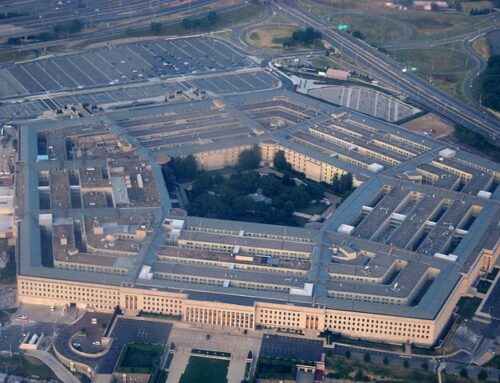More than a decade has passed since the end of the Cold War and the dissolution of our most menacing nuclear foe. Despite the dramatic differences between the ballistic missile based threats of the 1980s and the decentralized terrorist cells we fight today, the National Nuclear Security Agency (NNSA) is budgeting nearly $6.5 billion to revitalize our nation's nuclear weapon infrastructure. The money would go to projects ranging from the design of a 'bunker busting' nuclear warhead that can burrow into the earth to laying cable at the Nevada Nuclear Test Site.
One of the most significant elements of this effort is the Modern Pit Facility (MPF), a factory that would churn out the plutonium pits that trigger explosions in nuclear warheads at a rate of 125-450 a year. It would also have the ability to manufacture new design pits for nuclear warheads. The pit facility would cost taxpayers $2-4 billion to construct and $200-300 million a year to run.
With a $521 billion federal deficit, it is shocking that we are proceeding with this nuclear white elephant. Our staggering deficits and the ballooning costs associated with the war in Iraq make it imperative that lawmakers carefully assess any major new federal investment. Before we jump off the fiscal plank, we've got to know for sure whether we need it, and if we do, how soon we need it.
Under the terms of the Moscow Treaty, signed by President Bush in 2002, our active deployment of nuclear weapons should drop to about 2,000- a move that could make dismantlement a serious consideration in the near future. If we dismantle a significant portion of our nuclear arsenal between now and the time the MPF is scheduled to be completed in 2017, the MPF would be rendered superfluous by the more moderate pit production facility that the NNSA could build at Los Alamos Labs for far less: just $700 million. This facility could make up to 80 pits per year and would adequately provide for a smaller arsenal.
Even if we do need the MPF, we probably don't need it right now. The average age of pits in use right now is just 20 years. The NNSA has based their timetable for building the MPF on the assumption that pits last 45-60 years. Dr. Richard Garwin, a respected physicist who worked at Los Alamos Labs as a consultant, has pegged pit life at up to 90 years. If his estimate is accurate, the MPF might be decades premature.
The time to stop this program is right now. Reducing funds for the MPF has bi-partisan support among both fiscal conservatives and advocates of arms control. Last year, Senator Feinstein (D-CA) offered an amendment that would have kept the NNSA from selecting a site for the MPF. The amendment failed, but it garnered 41 votes.
This year, the NNSA has asked for $30 million to continue designing and choosing a site for the MPF. It is expected that Energy and Water Appropriations Chairman David Hobson (R-OH) will again slash the MPF's budget in the House. In the Senate, Senator Diane Feinstein (D-CA) could offer another amendment with a cut for the MPF. A vote in the Senate will come as early as June.
With a record deficit, there is no need to throw billions at a facility that may not even at this time. Lawmakers need to cease funding this project immediately and demand that the NNSA provide them with the information they need to make an informed decision. This means cutting the program until at least 2006, when the NNSA is expected to release their comprehensive study that would justify the need for a new multi-billion dollar pit facility.
Please e-mail your lawmakers today and urge them not to throw tax dollars down this nuclear money pit!











Get Social